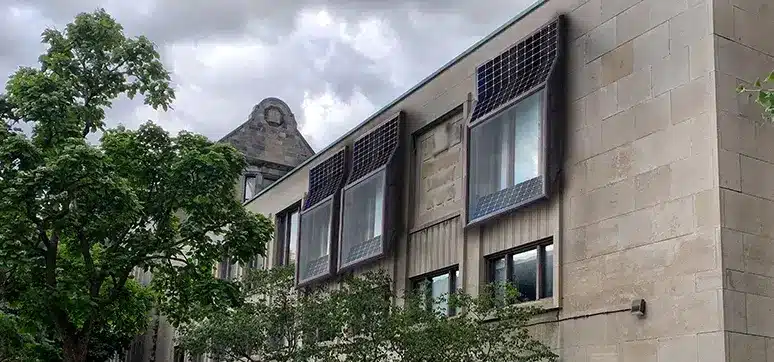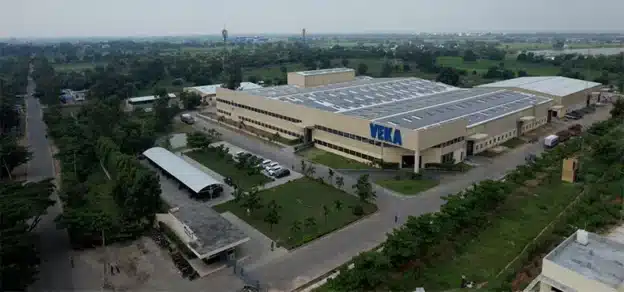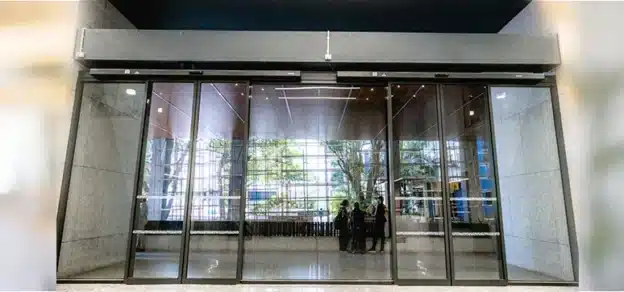People cite different reasons for choosing renewable energy. Some people hope to conserve natural resources, while others may see the possibility of an endless stream of revenue. No matter the reason, most people seek some level of control over their environment, especially when it comes to personal comfort. Researchers around the world dedicate themselves to meeting the needs of human beings. One of our more basic needs, beyond food and shelter, is climate –making the air warm or cool. Ideally, this can be achieved using a minimum of nonrenewables. Enter solar and wind, the biggest and cheapest natural sources of energy. Just these two naturally occurring phenomena are capable of responding to a major part of our human needs.
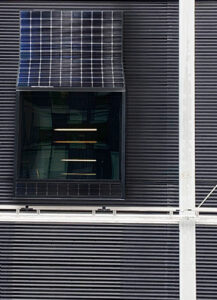
Think about this: up to 90 percent of our lives are spent indoors (possibly more for an avid gamer). We always hear about the quality of the air outside, when proper ventilation, temperature, and the quality of the internal air we breathe are vital for a healthy and comfortable life. Lack of proper temperature and low quality of internal can impact the morale and productivity of those who spend most of their day in an office and house. One disadvantage of solar is that there may not be enough space or suitable oriented roof area available of the disclosed window structure may cool the internal air of the building.
Besides providing heated air and natural ventilation, in both environmental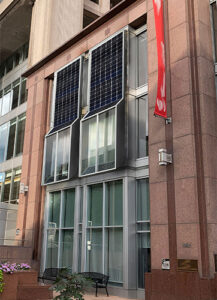
Solar power technology application in solar thermal windows simultaneously generates thermal energy and electricity and improves building performance, which together combine to benefit consumers by reducing energy demand in homes and businesses, in Canada with a cold climate. According to internal research, an average Canadian’s heating demand in cooler months would be reduced by up to 70% with such a system, whereas the cooling demand in warmer months would be reduced by 43% when this system is used on a 9 sq m-unit.
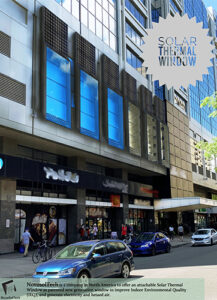
For an average consumer, the tilted photovoltaic panels, which are enclosed by an outer window. The housing, therefore, can generate heated air and electricity through semi-transparent PV panels, perforated suspended aluminum, and air inlet and outlet ports. Also, the housing can provide a microclimate zone between indoor and outdoor to decrease infiltration, exfiltration, and heat transfer which can decrease energy demand significantly.
The heated air (thermal energy generation) is connected to the interior of the building by ports, an inner port in the below of the system from indoor to suck indoor air to the system to get temperature, and an upper port with a fan and air filter to help the air circulation in the system and come heated and filtered air back to the indoor. Moreover, air circulation in the housing can decrease PV surface temperature helping to increase the efficiency of PV panels to generate electricity.
The net result of the design is cogeneration of electricity and heated air (electricity/thermal), and improvement of indoor air quality and comfort level through decreasing infiltration, exfiltration, heat transfer between indoor and outdoor, filtering air, and controlling solar heat gain in summer.
As a result, this system can decrease energy in winter and summer, besides improving the comfort and health level of indoor spaces. Besides technical

benefit consumers by reducing energy demand in homes and businesses
parts of combined energy benefit from the installation of this unit will exceed its cost before the fourth year of ownership. In effect, solar thermal window technologies have the potential to positively contribute to grid energy demands, making its clientele prosumers; that is to say, energy producers/consumers. solar thermal window technology is an obvious choice for consumers interested in energy-efficient construction and design; moreover, for anyone interested in lowering the operating costs of a building.
The system is essentially composed of a housing unit (or enclosure) that is installed on the outside of a building over/around an existing window after construction, and/or a new construction window in construction. The housing is composed of semitransparent photovoltaic cell (solar panel) technology which is situated above and below the solar thermal window at the optimum angle for solar energy collection. The area immediately in front of the window is a space created by this solar thermal system, it can be integrated architecturally with buildings after and during construction which improves the aesthetic value and appearance of buildings’ façade.

This system can reach a high level of technical efficiency in a cold climate. Internal market research indicates that solar thermal window technology will be highly competitive in markets like that of Canada due to the fact that 80% of Canada’s nonmedical commercial buildings were built before 2009, are known to have unacceptably high energy requirements and the majority of which have not yet undergone retrofit. This unique target market is also defined by the eventuality that these buildings will require energy-efficient retrofitting – either to meet regional environmental regulations or to reduce costs. Moreover, the regulatory environment favors clean energy retrofits including solar heating and electricity applications making them attractive to potential clients because their costs are up to 100% tax-deductible.
One solution? The facade integrated the solar window. This product is a window structure configured to form a principal chamber enclosing a base windowpane. It’s added to the exterior existing window or installed as a window package on the exterior wall of the building. Besides generating thermal and electrical energy, it also provides effective natural ventilation and can enhance the overall architectural expression of the building without affecting the normal function of the window. In certain examples, during the cold seasons, after suction of the internal air of the building and warming it, this air may be filtered and returned to the internal space of the building.
